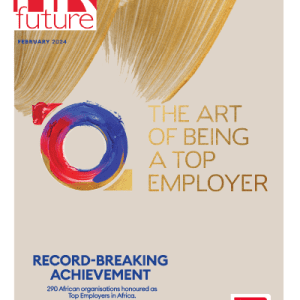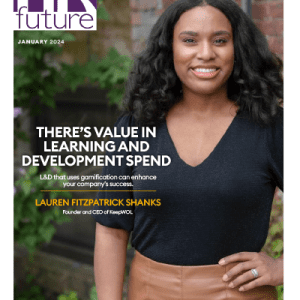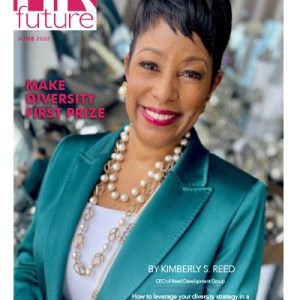In the rapidly evolving landscape of Human Resources (HR), the integration of cutting-edge technologies has become imperative for organizations striving to optimize talent and effectively manage diverse generations in the workforce.
This article explores the transformative power of Vector Search and Vector Database, shedding light on their applications in talent optimization and navigating the challenges posed by multiple generations in the workplace.
Vector Search Unleashed for Talent Optimization
Vector Search, a sophisticated information retrieval technique, has emerged as a game-changer in talent acquisition and management. Employing mathematical representations of data, Vector Search allows HR practitioners to navigate vast pools of talent efficiently.
Bullet Points:
- Precision Talent Acquisition: Vector Search enables HR professionals to identify candidates with specific skill sets and attributes by analyzing the vectors representing their professional profiles.
- Reduced Time-to-Hire: With the ability to swiftly match candidate vectors to job requirements, Vector Search significantly accelerates the recruitment process, minimizing time-to-hire and ensuring organizations secure top talent promptly.
- Enhanced Diversity and Inclusion: Vector Search algorithms can be fine-tuned to prioritize diversity and inclusion, aiding organizations in building more representative and dynamic teams.
- Vector Search’s precision extends beyond traditional keyword matching. It considers the semantic relationships between different skills and experiences, ensuring a more nuanced understanding of a candidate’s qualifications. This semantic analysis enhances the identification of candidates who may possess transferable skills crucial for adapting to evolving job requirements.
- Moreover, the reduced time-to-hire is not just a matter of efficiency but also a strategic advantage. In a competitive job market, organizations that can swiftly identify and secure top talent gain a crucial edge. Vector Search, by streamlining the recruitment process, allows HR teams to focus on building relationships with candidates, ensuring a positive candidate experience that can impact employer branding positively.
Vector Databases for Managing Multiple Generations
As the workforce becomes increasingly diverse in terms of age, experience, and expectations, managing multiple generations poses unique challenges. Vector Database offer a comprehensive solution to effectively address these challenges.
Bullet Points:
- Holistic Employee Profiling: Vector Databases create detailed profiles of employees, capturing not only their skills and qualifications but also their preferences, work styles, and career aspirations, providing a holistic view of each individual.
- Personalized Learning and Development: Understanding the vectors representing different generations allows HR to tailor learning and development programs, ensuring they resonate with the diverse needs and learning styles of employees across various age groups.
- Strategic Succession Planning: Vector Databases aid in identifying high-potential employees across different generations, facilitating strategic succession planning. This ensures a smooth transition of leadership roles and maintains organizational stability.
- Holistic employee profiling, facilitated by Vector Databases, is a paradigm shift from traditional HR approaches. Beyond simply cataloging skills and qualifications, these databases capture the evolving aspirations and motivations of employees. This depth of understanding empowers HR to implement personalized retention strategies, enhancing employee satisfaction and loyalty.
- In terms of learning and development, the personalization facilitated by Vector Databases goes beyond mere generational categorizations. It takes into account individual learning preferences, career goals, and even factors such as preferred communication styles. This targeted approach ensures that training initiatives are not only relevant but also engaging for employees across different age groups.
Navigating the Intersection: Vector Search and Multiple Generations
The intersection of Vector Search and managing multiple generations creates a powerful synergy, offering organizations unprecedented capabilities in talent optimization.
Bullet Points:
- Customized Recruitment Strategies: By leveraging Vector Search, HR can develop recruitment strategies tailored to attract individuals from specific generations, taking into account their unique skills, preferences, and motivations.
- Adaptive Work Environments: Vector Databases inform HR about the ideal conditions for productivity and job satisfaction for employees of different generations. This knowledge allows organizations to create adaptive work environments that cater to diverse needs.
- Data-Driven Employee Engagement: Utilizing data from Vector Databases, HR can implement targeted employee engagement initiatives, fostering a sense of belonging and purpose among individuals from various age groups.
Conclusion: Navigating the Future of HR with Vectors
As HR practitioners navigate the frontiers of talent optimization and grapple with the challenges posed by managing multiple generations, the integration of Vector Search and Vector Databases emerges as a beacon of innovation. The marriage of these technologies not only streamlines HR processes but also enhances the overall employee experience, paving the way for organizations to thrive in the dynamic landscape of the future. Embracing these technological advancements positions HR at the forefront of organizational success, ensuring a competitive edge in attracting, retaining, and developing top-tier talent across diverse generational cohorts.
Embracing these technological advancements positions HR at the forefront of organizational success, ensuring a competitive edge in attracting, retaining, and developing top-tier talent across diverse generational cohorts. It’s not merely about adopting new tools; it’s a strategic shift toward a more proactive, data-driven HR approach.
The impact goes beyond the HR department; it permeates the entire organizational culture. Vector-driven HR practices foster a culture of adaptability and inclusivity, where employees feel valued for their unique contributions. This, in turn, creates a positive feedback loop – a workplace that embraces change and diversity becomes more appealing to new talent, further enhancing the organization’s ability to attract the best minds in the industry.
Guest Writer.


























